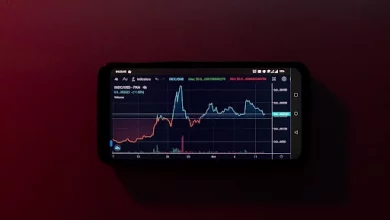Hedging Forex: How to Hedge Currency Risk

The FX market is the biggest financial market worldwide, with countless forex pairs available making it extremely volatile. With the concept of hedge currencies, traders can open multiple positions opposing market trends to minimize the risks and impact of adverse economic indicators. Read on to find out what you need to know about foreign exchange hedging.
What does Hedge Mean in Forex?
FX hedging is a method of limiting FX risk to a known amount by opening one or more trade accounts to offset an existing position. Simply put, it means preventing or minimizing losses occurring due to unexpected outcomes in the FX market. Hedging can protect against volatile interest rates and other economic factors such as inflation rates.
How does Hedging in Forex Work?
The hedging process starts by opening a long position with the anticipation that the market will move in a particular manner. A hedge is created by opening another position, short this time, to counter the movement of the currency pair that was initially expected. The hedge allows a trader to retain the original trade open position without making any losses in case the price goes against your expectations.
Although a trader can just decide to close their account and cash out, it may be more beneficial to hold on and see how patterns and fluctuations work out over time. A hedge helps preserve earnings already made or minimize losses. The main reason a trader needs to hedge is to limit risk. However, this strategy should only be used by those with adequate understanding of the timing of the market. If used appropriately, hedging can be a major part of the trading plan.
Hedging Strategies
You can apply the following strategies to reduce currency risk:
- Direct Hedging Strategy
This strategy involves creation of a hedge to prevent an adverse move by simultaneously holding currency pairs of short and long positions. For instance, if you are on a long USD/GBP, you open a short position of the same size.
Even though the resulting gain or loss is zero, the strategy is considered perfect hedge because it limits all risks while keeping the hedge active.
- Correlation Hedging
The foreign exchange strategy involves picking two currencies moving in the same direction and choosing opposing positions. For instance, you can hedge a long position GBP/CAD with a short USD/CAD since the two frequently have a positive correlation.
You need to remember that in a correlation hedging strategy, the exposure runs multiple currencies. Any divergence in the economies that affects the way currencies move, in turn, affects your hedge. The strategy is not a very reliable one unless a trader intends to create a complex strategy.
- Hedging with Options
Forex options are a form of derivatives that give a right to trade a forex pair at a specified price at an agreed future date. There are two types of forex options: call and put. If one decides to exercise the call option and suspects that the price of one currency might fall, he can take a put option to undervalue the same amount of currency to gain from the fall in price. In this manner, the trader minimizes losses and maximizes possible gains.
- Forwards and Futures Currency Contracts
A forward contract is an agreement to purchase or dispose of currency at a future date. The buyer has an obligation to buy the currency, unlike in a call option. Customization is flexible as a trader can settle the contract using a cash or delivery basis and change the contract’s validity duration. In a futures contract, the trader follows a similar process as in a forward contract, but futures are only bought and sold at an agreed amount.
- Cross-Currency Swap
In this strategy, two counterparties enter into a contractual agreement to trade principal and interest payments in different currencies. The goal of this strategy is to hedge against interest rates. They are not traded in a customized market, meaning they can be customized at any point in the agreement. The hedging strategy is particularly useful for multinational corporations.
How to Hedge Currencies
These are the simple steps to follow to hedge any currency:
- Register for an account- open a free account and begin trading. You don’t need to risk your money as you can practice using a demo account.
- Select a currency pair- there are countless forex pairs to trade depending on the platform provided by your forex broker of choice. You can, for instance, decide to take advantage of volatility by choosing a currency experiencing falling rates, high inflation, or changes in GDP.
- Choose an appropriate hedging strategy- you can choose any of the strategies mentioned above or any other and build a plan to work with.
- Keep up with market updates- the FX market is ever-changing, so don’t be left behind.
- Define your entry and exit plans before placing a trade- it’s critical to put in place a stop-loss point to minimize losses and an entry point to take advantage of market indicators.
Undoing a Hedge
If you predict that the market could reverse and favor your initial trade, you can employ a stop-loss order on the trade or close it completely. Most brokers do not allow traders to choose directly hedged positions as these hedging strategies can get very complex.
Exiting a Hedge
When closing a complex hedge, you may want to keep the initial position open. However, when closing both, ensure to close them simultaneously to prevent any losses resulting from the gap.
Forex Hedging Example

Say you are operating a long GBP/USD position at $110. If you expect a decline in the US dollar, you may want to hedge your exposure using a put option on GBP/USD using a strike price of $104. If the yen has fallen below the strike price by the time of expiry, your put option will be in the money. You can use the profit to offset the losses incurred in the long GBP/USD trade. However, if the US dollar rises above the strike price, you will pay a premium. The gains of the long trade can offset the losses from the short trade.
You can also take advantage of a political situation using a correlation strategy which involves two currencies directly related, such as USD/JPY and CAD/JPY. You can open a long position for USD/JPY and a short CAD/JPY. When the Japanese Yen appreciates against the Canadian dollar, the long position will result in a loss but it will be offset by a gain in the short position. If the Japanese Yen depreciates against the CAD, the short position will result in a loss which will be offset by the forex hedge funds.
Final Thoughts
Forex hedging is the process of protecting assets from the risk of losses, however, it does not guarantee the success of your investment. By now, you should know that foreign exchange can be a risky investment. With the forex hedging strategies, you can create multiple positions to overcome the risks and impacts of volatility in currency markets. Understanding the fine details of hedging strategies may take a while, so don’t pressure yourself to become a champion from one day. Keep practicing forex hedging strategies so that when you’re ready to enter into real forex trading, you have had the sufficient practice you need.




